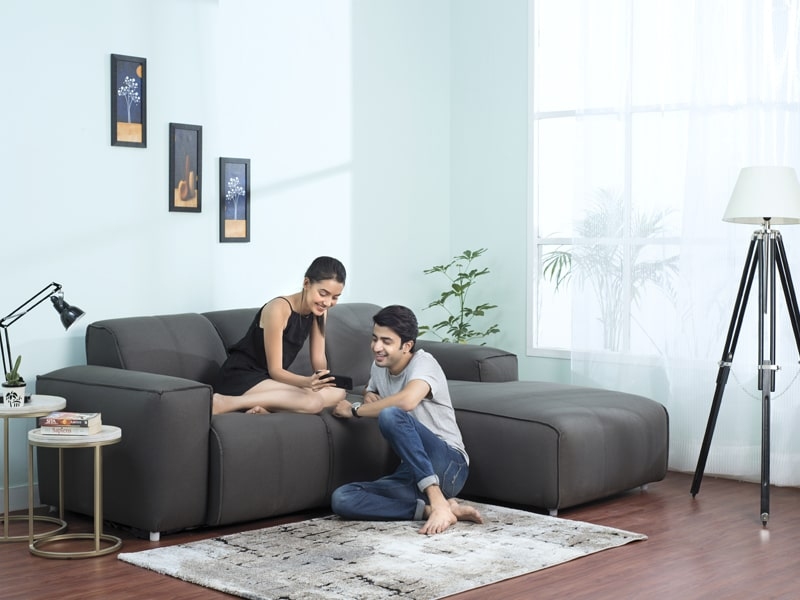
Whether you have a reclining chair or a sofa, upholstered furniture adds personality to your home and becomes an integral part of your daily routine, allowing you to lean back and unwind after a challenging daily routine.
In most cases, a favorite upholstered furniture piece can become forever tied to a special identity in the house. You’ll mostly hear people saying this “dad’s chair” or “grandma’s chair.”
And for these reasons, it pays to maintain and treat these items well. So, in today’s article, we’ll discuss the maintenance tips for upholstered furniture to help you preserve these valuables at home so they can serve you for long. Let’s dive right in!
Tips for maintaining your upholstered furniture.
One of the best parts of maintaining your furniture fabrics is that it is easy and doesn’t need much time. And the results? Your furniture will serve you for the longest time possible. Here are some basic tips to get you started.
1. Select the right fabric.

Give yourself a head start in furniture maintenance by purchasing right from the beginning. Choose the right fabric materials for the right places and make the task easier.
Not only does this make maintenance easy, but it also extends the furniture’s lifespan and blends well with your space designs. For instance, synthetic fibers are ideal for upholstered furniture placed in places that experience heavy usage.
And if you own pets, go for fabrics that are not so fluffy, have too much texture, or loose weaves.
2. Attend to accidents immediately.

Accidents are inevitable, and no matter how careful you are, you will always experience them. Whether your pets cough up hairballs or your toddler spills water or milk, an accident on your sofa, patio chairs, or car upholsters is not fun.
When any of these accidents happen, you will want to deal with them right away before they get absorbed more deeply in the fabrics.
Firmly press a dry towel on the spot. Avoid rubbing, as this can force the liquid to spread further to other areas. For solid spills, try and remove the mess as much as possible, then use a wet towel to blot at the fabric.
3. Deep clean the furniture once a year.
Most commonly used furniture in this category is upholstered sofa set for living room. It is also a piece of furniture that gets spotty and dusty pretty quickly. As we not only sit on sofa, we play, eat, watch movies and even sleep on sofa set. Keeping it pristine is a little tricky yet entirely possible. Although stain treating, vacuuming, and attending to spill immediately will keep the furniture in a good state for long, you should also consider deep cleaning with a steam cleaner at least once a year.
A steam cleaner helps in removing deeply embedded debris and stains, leaving it as clean and fresh as possible. You might consider getting a professional to do this for you if you don’t have access to a steam cleaner.
These expert cleaners will know the right chemicals and tools to use for cleaning your sofa and removing even the most stubborn stains.
4. Use spray paint to give a new cover.
Spray painting fabrics on furniture is an unconventional yet creative approach to maintaining and updating the appearance of your sofas. It can be a cost-effective way to breathe new life into old or worn-out pieces, making them look fresh and vibrant once again.
This method is particularly useful for those who enjoy DIY projects and want to experiment with unique design ideas.
When choosing a spray paint for fabric, make sure to opt for a product explicitly designed for this purpose. Fabric-specific spray paints are formulated to adhere well to fabrics, providing a flexible and durable finish.
Regular spray paint designed for other surfaces may not bond properly with the fabric and could lead to unsatisfactory results.
Before diving into the full project, it’s crucial to test the paint on a small, inconspicuous area of the fabric. This test will help you gauge how the fabric responds to the paint and ensure that the color and texture suit your preferences.
When you begin the painting process, remember that less is more. Apply thin, even coats of paint to the fabric to prevent oversaturation, which could lead to an uneven finish or make the fabric feel stiff.
Allow each coat to dry thoroughly before applying additional layers, following the manufacturer’s recommended drying time before using it.
5. Cover if necessary.

If your upholstered furniture or car seats are showing signs of significant wear and cleaning doesn’t seem to make a difference, it might be the right moment to consider covering them up.
For your furniture, go for slipcovers. They are available in different colors and sizes, so you’ll probably get one that fits your chairs and couches while also appealing to your interior design. They are also good for those with pets, as their hair and dander will get in contact with the covers and not the chair itself.
Regarding your vehicle, you might want to consider investing in a waterproof car seat cover. These covers are available in a wide range of styles, allowing you to choose one that suits your personal taste.
Besides adding a touch of style, they also serve a practical purpose: protecting your car seats from spills and stains. So, in case you accidentally spill a drink in your car, the cover will be much easier to clean up compared to dealing with stains on the original upholstery.
Conclusion.
In summary, to keep your sofa upholstery, furniture, or car upholstery in top condition, regular maintenance is essential. Vacuuming, treating stains, periodic deep cleaning, covering, and spray painting are all crucial to maintain the appearance and freshness of the upholstery.
While you can perform basic maintenance on your own, don’t hesitate to seek professional assistance for deep cleaning of furniture. Professionals have the necessary expertise, tools, and specialized chemicals, whether you’re cleaning your upholstered sofa or tackling dirty car seats. Their expertise ensures effective and thorough results.
Please leave your comments below and let us know if this guide is of help to you! Until then, happy maintenance!
FAQs – Upholstered Furniture Maintenance
1. How often should I clean my upholstered furniture?
Mostly it depends on usage and environmental circumstances. Still, cleaning your upholstered furniture at least once every three to six months is necessary. Regular cleaning keeps your furniture appearing clean and well-maintained by preventing the accumulation of dust, filth, and stains.
2. Can I use water to clean my upholstered furniture?
Water can be used for spot-cleaning small stains, but it’s essential to be cautious and not over-wet the fabric. For deep cleaning, it’s best to rely on professional upholstery cleaning services, especially for delicate materials.
3. How do I protect my upholstered furniture from spills and stains?
To protect your furniture, consider using fabric protectors or stain repellents specifically designed for upholstery. These products create a barrier on the fabric, making it easier to clean spills before they penetrate the material.
4. Can I vacuum my upholstered furniture?
Yes, vacuuming is an essential and easiest part of upholstery maintenance. Use a soft brush attachment to gently remove dust and debris from the fabric’s surface. Regular vacuuming helps prevent dirt from settling into the fibers.
5. How to remove stain from my furniture with upholstery?
Act promptly by blotting the stain with a clean, dry cloth to absorb as much liquid as possible. Avoid rubbing the stain, as it may spread further. If the stain persists, consult the manufacturer’s care instructions or seek professional help.
6. How do I maintain the shape of my upholstered furniture cushions?
To maintain the shape of your cushions, fluff them regularly and rotate them whenever possible. Avoid sitting in the same spot consistently to prevent excessive wear on specific areas.
7. Can I remove the upholstery covers for washing?
In some cases, yes, you can remove and wash the upholstery covers if they are designed to be removable. However, always check the care label or manufacturer’s guidelines before attempting to remove and wash the covers.
8. How do I prevent fading of upholstery fabric?
To minimize fading, keep your furniture away from direct sunlight or use curtains and blinds to block UV rays. Additionally, consider rotating or rearranging your furniture periodically to ensure even exposure to light.
9. Is professional upholstery cleaning necessary, and how often should I do it?
Professional upholstery cleaning is highly recommended every 12 to 18 months, depending on usage and the condition of your furniture. Professionals can deep clean and refresh your upholstery, extending its lifespan and maintaining its appearance.
10. In case my upholstered furniture gets damaged or torn, what should I do?
For minor damage, consider using a fabric repair kit or consult a professional upholsterer for repairs. In case of significant damage, seek expert advice to assess if it’s more cost-effective to repair or replace the furniture.

